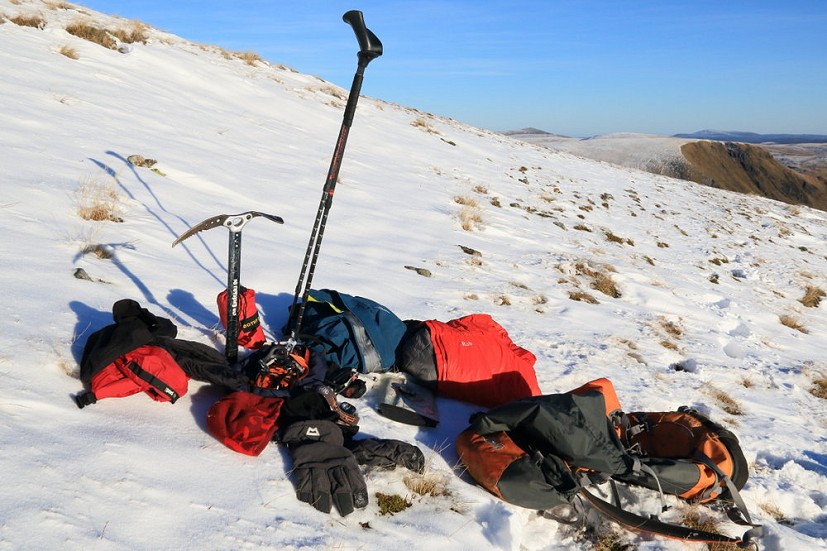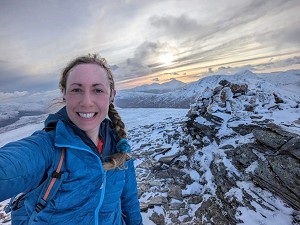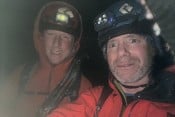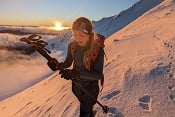
With daylight dwindling and wild weather on the rise it's the time of year to think about what's in your pack, and brush up winter skills, say the safety folks at the MCofS and the Lake District's Felltop Assessors.
'Taking a walk in the mountains during winter is a magical experience, but once temperatures drop and ice and snow become an unknown factor, it’s important more than ever to make sure you are fully prepared before heading out to the hills' says Graham Uney, one of the Lake District Weatherline's two Felltop Assessors, who provide daily winter conditions reports from Helvellyn. As part of his service this year Graham will also be holding winter skills courses for walkers.
'The Weatherline reports play a vital part in that preparation and the addition of the new winter skills course will give keen winter walkers the chance to learn how to use the right equipment and stay safe.'
Winter Essentials
Our winter walking bag at UKH includes:
- Full waterproofs
- Hat and warm gloves
- Spare hat and gloves
- Synthetic insulated jacket
- Group shelter
- Ski goggles
- Headtorch with full batteries
- Spare headtorch
- Map and compass
- Extra high-calorie food
- Ice axe and crampons
- Walking poles
- Phone with full battery
- Whistle
Meanwhile north of the border Heather Morning, Mountain Safety Adviser with the Mountaineering Council of Scotland, has issued her annual advice on gear:
'Shorter daylight hours, dropping temperatures and the first dusting of snow on the hill are all good indicators that it is time to think about extra kit in your rucksack' she says.
'It's easy to get caught out after the clocks change, especially as routes will take longer than expected in winter conditions and many people will end up finishing their route in the dark so a head torch and spare batteries is crucial.'
'If you are heading out on the higher tops, now is the time to add crampons, rigid boots to accommodate them, an ice axe and spare essentials such as hats and winter gloves to your kit list.'
'Temperatures at 1000m can be at least 10c lower than sea level at this time of year, and feeling even lower through the effect of any wind chill many underestimate how quickly they can feel the cold which can turn to hypothermia within less than an hour. Extra layers are essential, such as a synthetic duvet jacket, and an emergency bivvi bag stored in the bottom of a rucksack is highly recommended, just in case you have to be stationary on the hill for any length of time.'
'Those who head to the hills with friends or as part of a group are advised to invest in a lightweight, nylon group shelter. This can provide a snug spot for lunch if the weather is poor and a vital refuge if someone in your party is injured and you are waiting for help to arrive.'
Every winter the MCofS gets its safety message out by teaming up with outdoor shops across Scotland to offer a series of free winter mountain skills talks, designed to give a taster of essential skills for novices and a refresher for seasoned mountaineers. This season eleven talks are being held at venues from Inverness to Edinburgh,
'We find that an effective way to get the message out to less experienced mountain lovers or those who want to progress from summer hillwalking to winter mountaineering' says Heather. 'Dealing with winter conditions and avalanche avoidance isn't just a case of buying all the right gear. The right knowledge and experience is crucial.'
The MCofS also run a number of subsidised winter mountain skills training courses, and provides further guidance and skills videos. See more here













Comments